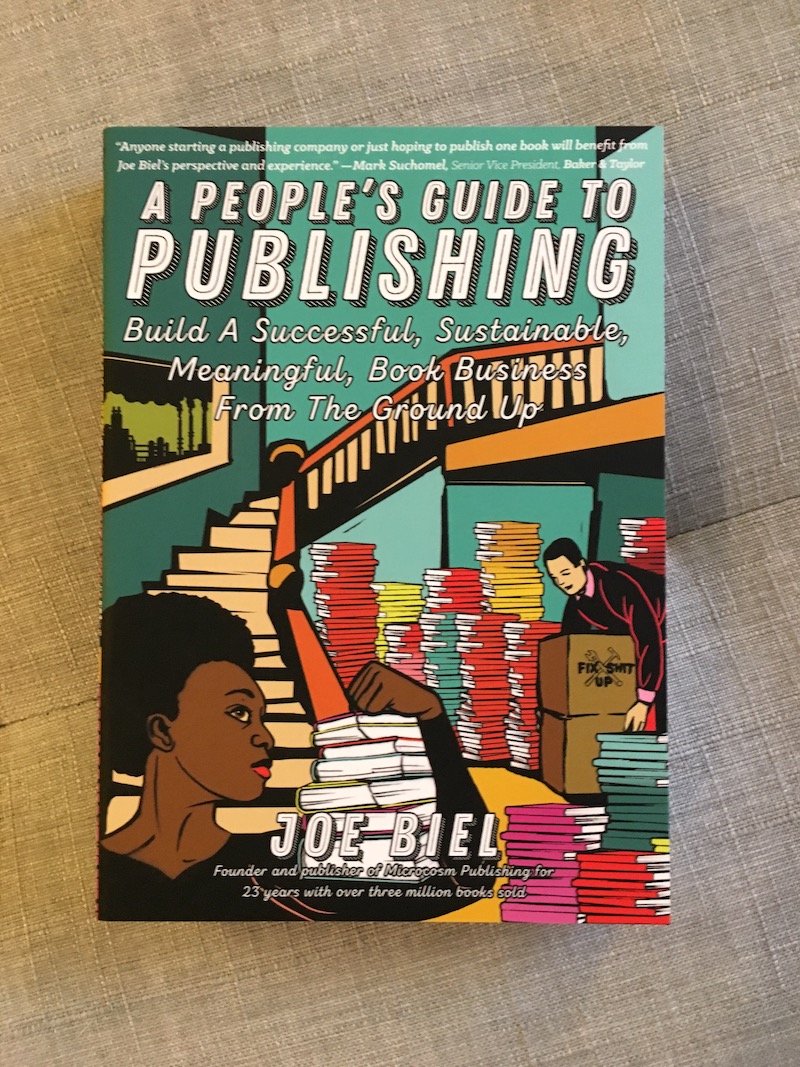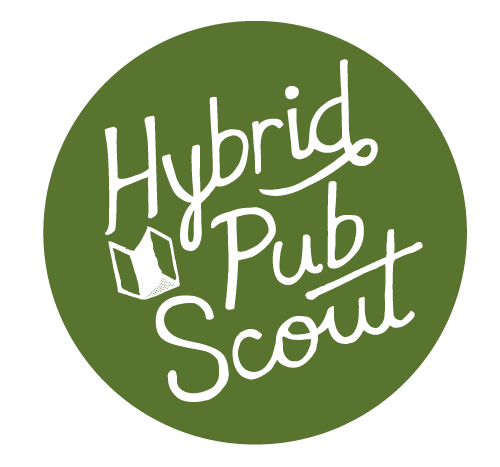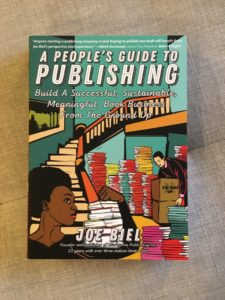Microcosm continues teaching publishing lessons with a People’s Guide to Publishing vlogcast.
by Joe Biel
[Psst—Go check out our interview with him in episode 15!]
Four years ago I sat in my office with a star intern, Sidnee Grubb. She had utterly exceeded every expectation and task that I set at her feet. She asked me what she should read to continue her publishing education. I stared at the carpet, hoping for answers. All of the books were obtuse, if not impenetrable. The vast majority were severely outdated and afraid to make any definitive statement about the publishing industry. I had recently read Publishing for Profit and while I enjoyed it, the biggest takeaway was that if I had fewer than 20 years of experience under my feet, the entire thing would have over my head. I tried to level with Sidnee that nobody wants to predict where publishing is going or tell you how to do it. The majority of writers want to write thinkpieces about how things could or should be different; but these authors focus on things too big and cumbersome to be within the locus of control of the common people. I told Sidnee that I would think about it and get back to her.
Within another month, my business partner, Elly Blue, had convinced me that I was going to write publishing’s first definitive how-to book in over 20 years. Elly had coached me through writing simple articles on our website that we had dubbed “The Business of Publishing.” At a PGW sales conference, young publishing mogul Sarah Armstrong suggested that we title it A People’s Guide to Publishing. I was inspired and up for the task.
I missed my manuscript deadline three times. Our company was growing rapidly, particularly after we left PGW to self-distribute our books. Sales soared, every aspect of my job became much busier, and I had no time to write a book. I now understood one reason why thriving publishers didn’t leave trails of breadcrumbs to recreate their successes.
Slowly, I found time to read every book ever published about publishing. It was alternatingly fun and painful to see what other authors had gotten away with and released into the world. While some of those sentiments resonated with me, ultimately I wrote about what I had learned from 23 years of publishing much more than anything that I found in any book. I took the time to entertain and learn from all perspectives so that I wasn’t just writing my own way. And that galvanized my thinking: I had been wrong about many things. What’s right for us isn’t right for everyone. And I feel that too made me a better publisher.
So much of publishing is obscured, privatized, and intentionally held hostage from authors and the public. These matters are the final barrier to entry for new publishers. So I outlined all of my mistakes, mocked all of the absurdities of the industry, and did my best to show how much room there still is for new players to enter and succeed in the field.

A People’s Guide to Publishing is my eighth book but more importantly, it’s my first where I didn’t suffer imposter syndrome. I felt that if I didn’t know the material after 23 years, then everyone was an imposter. And to some degree, I think that’s true. But I was an imposter who was more than happy to write out the answers to what a standard contract looks like, why things work the way that they do, and how easy it is to uproot stagnant dinosaur systems.
Like many authors, I silently watched as dozens of reviews of my book appeared online; in wonderment and awe. My favorite reviews wanted to split hairs over a single sentence out of context and explain exactly how I was wrong. I had watched this happen to each of our most successful authors over the years and this is how I knew that I had already succeeded: I was getting under critics’ skin; they felt that they had to take me seriously. Over and over, reviewers said that it was the most helpful nuts-and-bolts book about publishing that they’d ever read—even people who had operated a press or had many years of paid education in publishing.
Still, I was shocked when my book became the textbook at half a dozen university publishing programs, including the local one at Portland State. I began receiving more and more publishers seeking mentorship relationships and sending me questions they had. Usually, these things were covered in the book but perhaps not in a way that was resonating with a publisher who lacks emotional distance from their own work.
So I suggested to Elly that we could migrate our podcast to a vlogcast and answer these questions in short episodes to further fill in gaps for new publishers or veterans who wanted to reframe their thinking about basics. Elly told me that this was a great idea but neglected my requests to join me on the first episode. But the following week, she reluctantly asked me how long it would take and agreed to sit down for ten minutes on camera. Half an hour later she was still gushing about the topic and then spent the next week exclaiming how clarifying it was for the rest of her work to spend the beginning of the day reflecting on the rudiments of a task that she performs daily. For whatever reasons, probably as a result of my autistic brain, I don’t disconnect the minutiae of a task from the big picture and the goals. Perhaps that’s why this work resonates so hard. My quest has forever been to uproot legacy systems and replace them with new ones that best serve the stated goals.
Please feel free to send questions you’d like answered or topics you’d like addressed to podcast@microcosmpublishing.com



